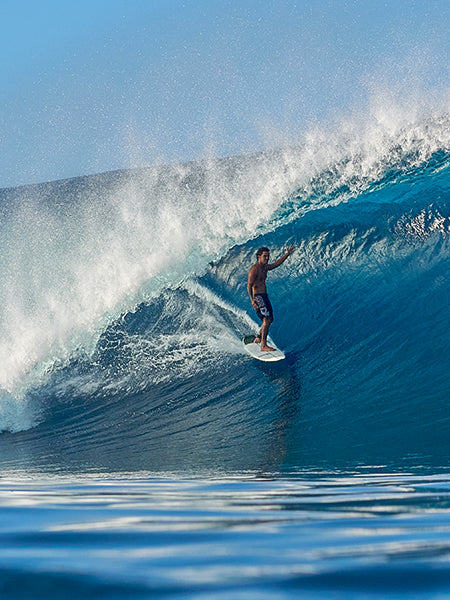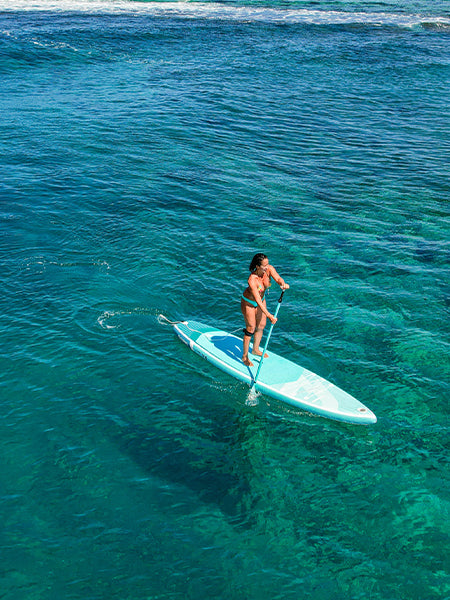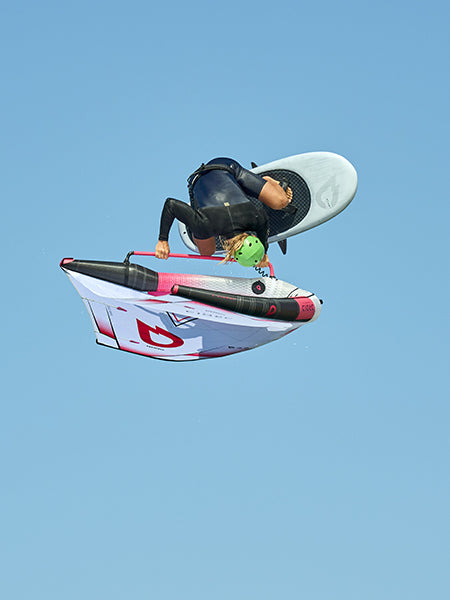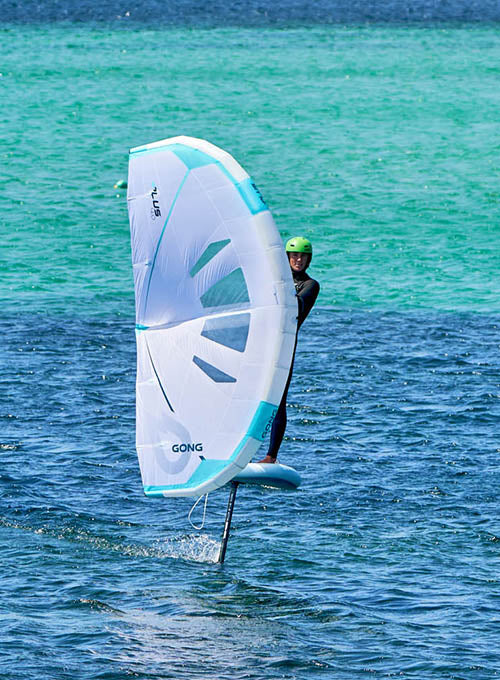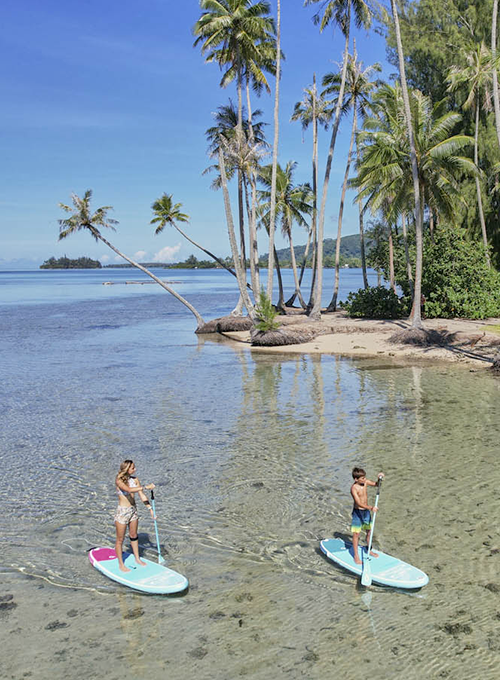Backwinded riding (toeside)
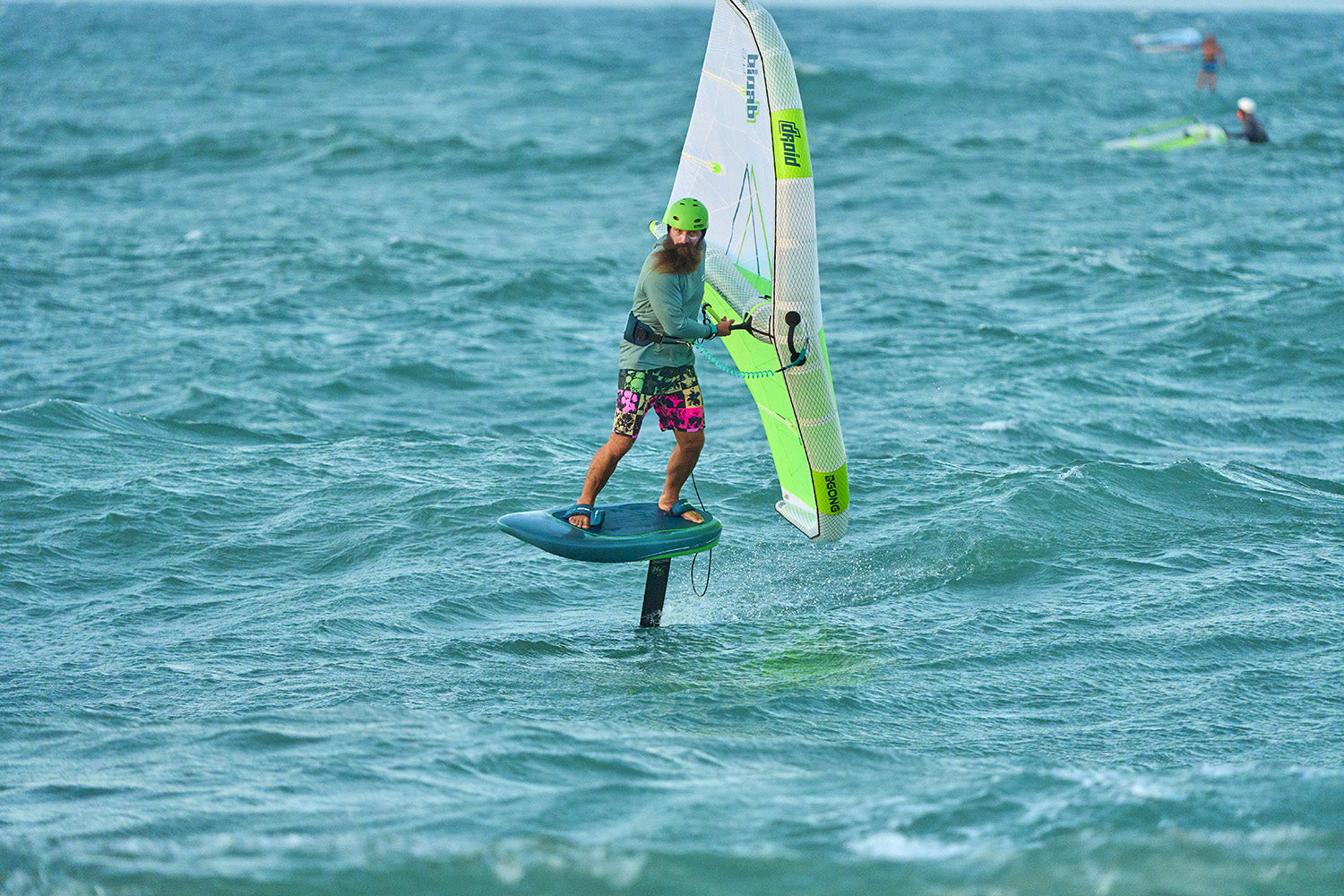
Experiment with backwinded riding during your next water session to elevate your freestyle game !
Being able to ride Toeside Backwinded is a super fun, non-jumping, freestyle maneuver that can open up many doors to different tricks like Downwind 360s on the water or Toeside Backwinded Air jibes. If you are someone who is confident in their basic riding and are starting to get your jibes more consistently, this move is definitely something for you to try. So here it is, broken down into 4 parts like usual: the preparation, the entry, the midpoint, and the exit.
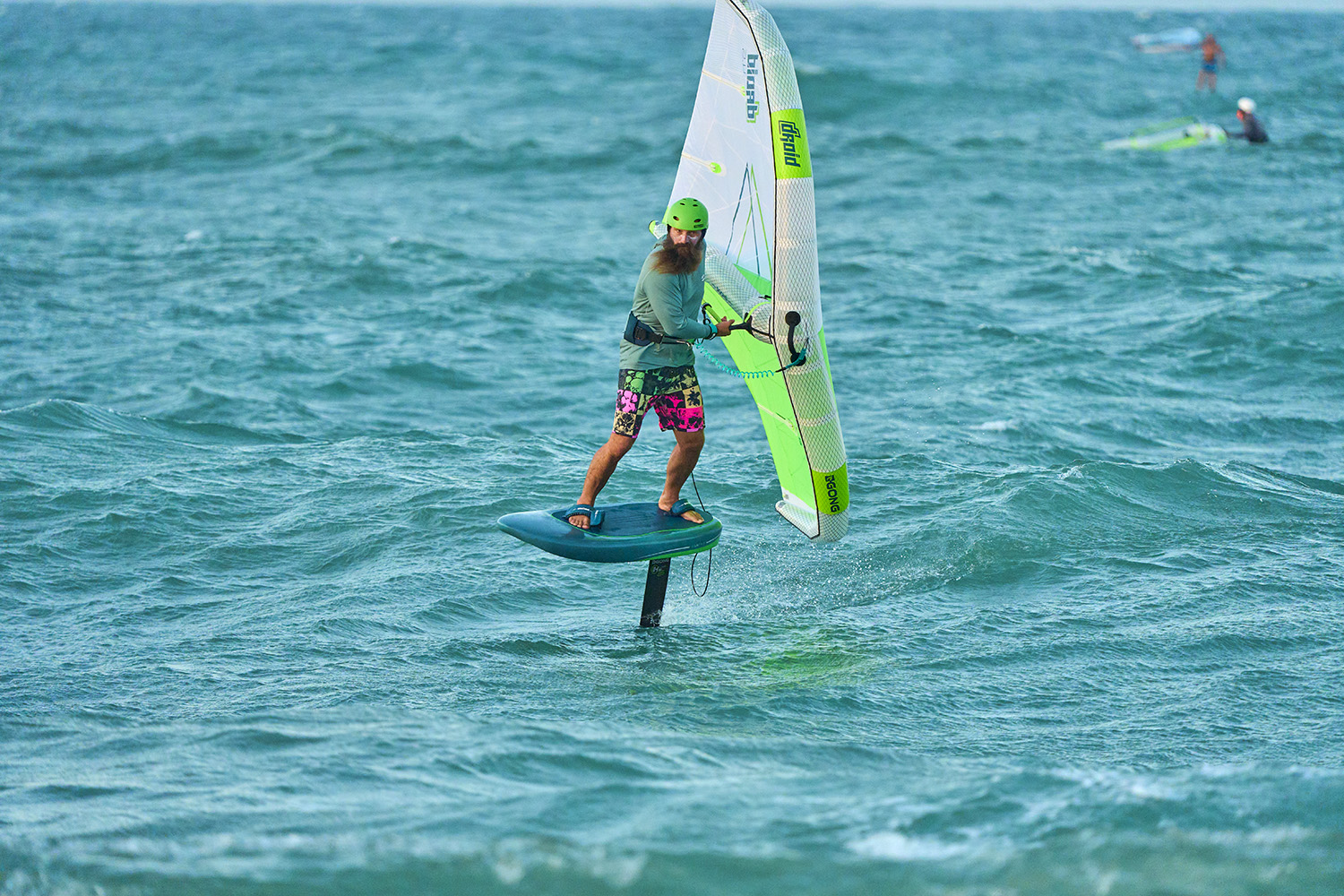
Preparation
To prepare to ride backwinded, first make sure your feet are in a stable position with both feet allowing you to apply pressure to the leeward rail. This means having your toes past the centerline of the board so that you can apply consistent pressure on the leeward rail to roll the board downwind. Now bring your backhand further down the center strut of your wing and close to the back of your handles or boom.
Entry
Next, you’re going to accelerate by leaning the wing forward and flattening out the board to head downwind. Once you’ve done so, it’s time to roll the board onto the leeward rail. Put pressure onto the balls of your feet and roll the board like you would for a jibe. At this point, you are going to pull the wing closer to the back of the board by sheeting in the wing and rotating your arms slightly towards the tail of the board. As you continue to apply pressure through the leeward rail, hold the wing in this position until your board is pointing across the wind, just slightly down wind of perpendicular, on the opposite tack. Now it’s time to lock into the backwinded position.
Midpoint – Riding Backwinded
Now that we are in a position where we will start to feel the wing backwind soon. This is the most technical part of this maneuver as it takes precise handling to make sure the wing is in a stable enough position to ride backwinded. As the wing starts to backwind, tighten the grip of your handles or boom as the wing will start to become less stable as the wind will be hitting the wrong side of the canopy, this will stop the wing from rolling back to its natural position. Now it’s time to balance the power of the wing while it is backwinded and find the perfect position where the wing stays powered up enough to keep you moving past the stall speed of the foil – note that it is much easier to learn how to ride backwinded on a larger foil as it will take less effort since you won’t have to focus on creating speed in a backwinded position. To find the perfect position where the wing feels stable, simply move the wing towards the nose or towards the tail until it feels balanced enough to allow you to travel in a straight line while riding backwinded. Now you are officially riding backwinded.
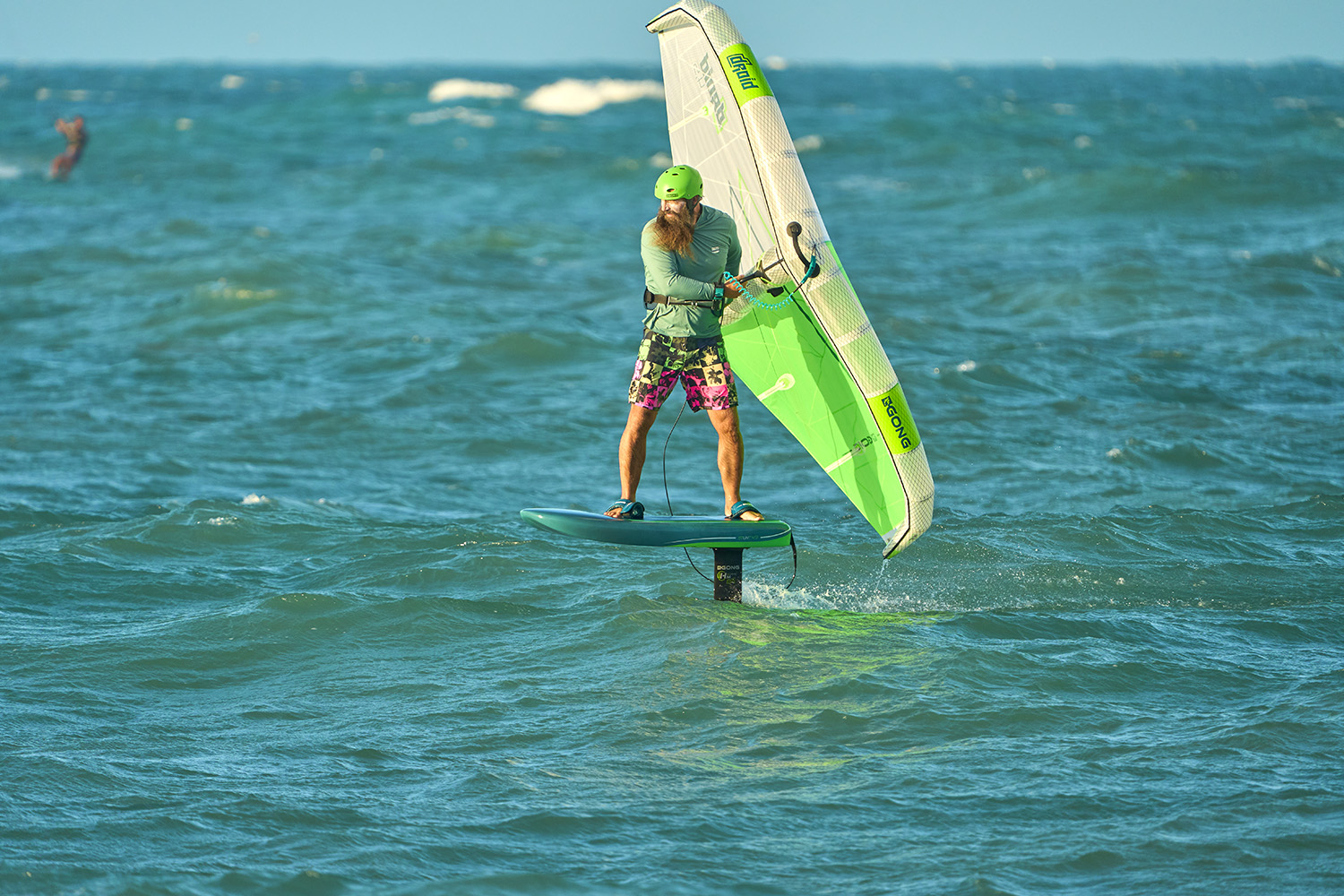
Exit
To exit from backwinded riding you can tack out by leaning the wing slightly further towards the back of the board and carving through your toeside so that you can pivot around its force. This will mean that your board will have traveled through 360 degrees, which can also count as a downwind 360 😉 Another option is to jibe out the backwinded position by moving the wing forward towards the nose of the board and putting pressure through your heels like a toeside to heelside jibe.
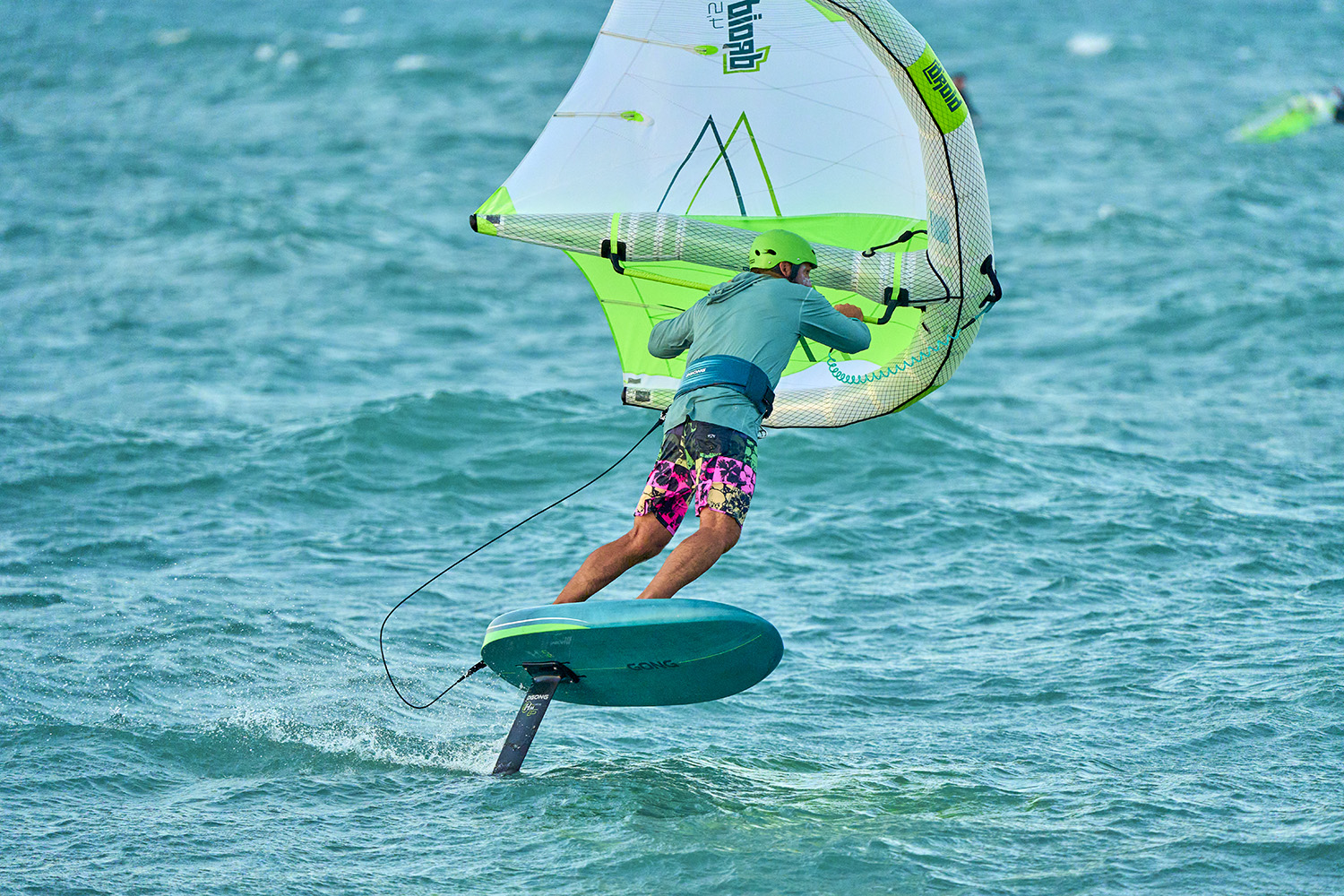
Conclusion
Riding backwinded adds excitement to your sessions with just a few easy steps. Experiment with it during your next water session and elevate your freestyle game.
